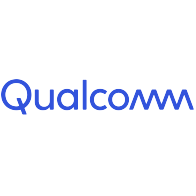The role of 6G in agriculture
Agriculture is one of the key contributors to European GDP. Almost 40% of EU budget is spent for agriculture to sustain healthy food, meat and fish production is a sustainable way. In the current landscape of agriculture and aquaculture for food production, digital technologies have emerged as a transformative force leveraging cutting-edge technologies to enhance productivity, sustainability, and decision-making processes. Digital farming and precision agriculture are key trends which will leverage the evolution of IoT technologies and the evolution of connectivity services from 5G to 6G that will collect more high fidelity data to monitor soils, crops, animal wellness and trigger automation in this sector. The final aim is to produce more (quality food) with less (pesticides)to provide the food transformation industry, retail and restauration with higher quality and more sustainable raw natural material. The recent pandemics showed how important livestock monitoring is along with the paramount importance of reliable communications. The food production industry is demonstrating in its own high innovation as witnessed by recent advancements in meat culture.
Looking to the future, the demands on communication networks in digital farming are expected to grow exponentially. The farming industry will not only require more reliable, high-speed, and low-latency connectivity but also support the integration of artificial intelligence, machine learning, and sensing capabilities that 6G will offer natively from the edge cloud. Advanced analytics, digital twins, autonomous vehicles and drones are digital concepts that are already changing a traditional sector bases on centuries old procedures. New concepts like indoor farming based on advanced digital and communication services will change for ever the outlook of an industry dominated by hard work and tractors.
Policy measures such as the Biodiversity Strategy and the Farm2Fork Strategy will finally need advanced IoT capabilities that 5G and its evolution to 6G will support. 6G with its new features will step up the sector sustainability level (“6G for Green”) but attention must be put on 6G sustainability aspects such as energy consumption of networks and AI training, bio degradation of IoT devices etc. (“Green 6G”).
5GPPP and now SNSJ JU are funding research projects that make show concrete achievements in abovementioned statements. This document contains most relevant use cases investigated under European funded research projects and the level of impact of 6G.
The role of 6G in agriculture

AIOTI is the multi-stakeholder platform for stimulating IoT and Edge Computing Innovation in Europe, bringing together small and large companies, academia, policy makers and end-users and representatives of society in an end-to-end approach. We work with partners in a global context. We strive to leverage, share and promote best practices in the IoT and Edge Computing ecosystems, be a one-stop point of information on all relevant aspects of IoT Innovation to its members while proactively addressing key issues and roadblocks for economic growth, acceptance and adoption of IoT and Edge Computing Innovation in society. AIOTI’s contribution goes beyond technology and addresses horizontal elements across application domains, such as matchmaking and stimulating cooperation in IoT and Edge Computing ecosystems, creating joint research roadmaps, driving convergence of standards and interoperability and defining policies.
The 6G Smart Networks and Services Industry Association (6G-IA) is the voice of European Industry and Research for next generation networks and services. Its primary objective is to contribute to Europe’s leadership on 5G, 5G evolution and SNS/6G research. The 6G-IA represents the private side in both the 5G Public Private Partnership (5G-PPP) and the Smart Networks and Services Joint Undertaking (SNS JU). In the 5G-PPP and SNS JU, the European Commission represents the public side. The 6G-IA brings together a global industry community of telecoms & digital actors, such as operators, manufacturers, research institutes, universities, verticals, SMEs and ICT associations. The 6G-IA carries out a wide range of activities in strategic areas including standardization, frequency spectrum, R&D projects, technology skills, collaboration with key vertical industry sectors, notably for the development of trials, and international cooperation.
The role of 6G in agriculture
© AIOTI / 6G IA. All rights reserved.

